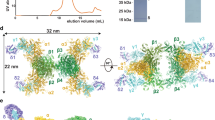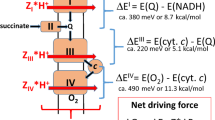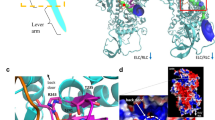Abstract
In previous publications1 evidence has been presented for the occurrence of displacement mechanisms in a wide variety of enzymatic reactions to which those of adenosine triphosphate are closely analogous. Assuming that the adenosine triphosphate reactions proceed by the same mechanisms, it can be deduced from the nature of the products that the adenosine triphosphate can undergo nucleophilic attack at any of its three phosphorus atoms. As examples, the Lohmann reaction with creatine2 must involve attack at the terminal phosphorus atom, the coenzyme A reaction of Lipmann et al.3 must involve attack at the middle phosphorus atom and the Kornberg reaction with nicotinamide mononucleotide4 must involve attack at the innermost phosphorus atom. If the adenosine triphosphate is hydrolysed by an adenosine triphosphatase in ordinary water to adenosine diphosphate and inorganic phosphate, the pathway is not obvious, since attack at either the terminal phosphorus atom or the middle phosphorus atom would give the same products. This ambiguity can be avoided, however, by using H218O, in which case the alternatives are clearly distinguishable (cf. reaction 1). The study of the mechanism of adenosine triphosphate hydrolysis in muscle was therefore performed in a medium of H218O and the products were analysed for their content of oxygen-18.
This is a preview of subscription content, access via your institution
Access options
Subscribe to this journal
Receive 51 print issues and online access
$199.00 per year
only $3.90 per issue
Buy this article
- Purchase on Springer Link
- Instant access to full article PDF
Prices may be subject to local taxes which are calculated during checkout
Similar content being viewed by others
References
(a) Koshland, jun., D. E., J. Amer. Chem. Soc., 74, 2286 (1952). (b) Stein, S. S., and Koshland, jun., D. E., Arch. Biochem., 39, 229 (1952). (c) Koshland, jun., D. E., Biol. Rev. (in the press).
Lohmann, K., Biochem. Z., 271, 264 (1934).
Lipmann, F., Jones, M. E., Black, S., and Flynn, R. M., J. Amer. Chem. Soc., 74, 2384 (1952).
Kornberg, A., J. Biol. Chem., 182, 779 (1950).
Cohn, W. E., and Carter, C. E., J. Amer. Chem. Soc., 72, 4273 (1950).
Cohn, M., “Phosphorus Metabolism”, 374, edit. by W. McElroy and B. Glass (Johns Hopkins University Press, 1951).
Author information
Authors and Affiliations
Rights and permissions
About this article
Cite this article
CLARKE, E., KOSHLAND, D. Mechanism of Hydrolysis of Adenosine Triphosphate catalysed by Lobster Muscle. Nature 171, 1023–1024 (1953). https://doi.org/10.1038/1711023a0
Issue Date:
DOI: https://doi.org/10.1038/1711023a0
Comments
By submitting a comment you agree to abide by our Terms and Community Guidelines. If you find something abusive or that does not comply with our terms or guidelines please flag it as inappropriate.



